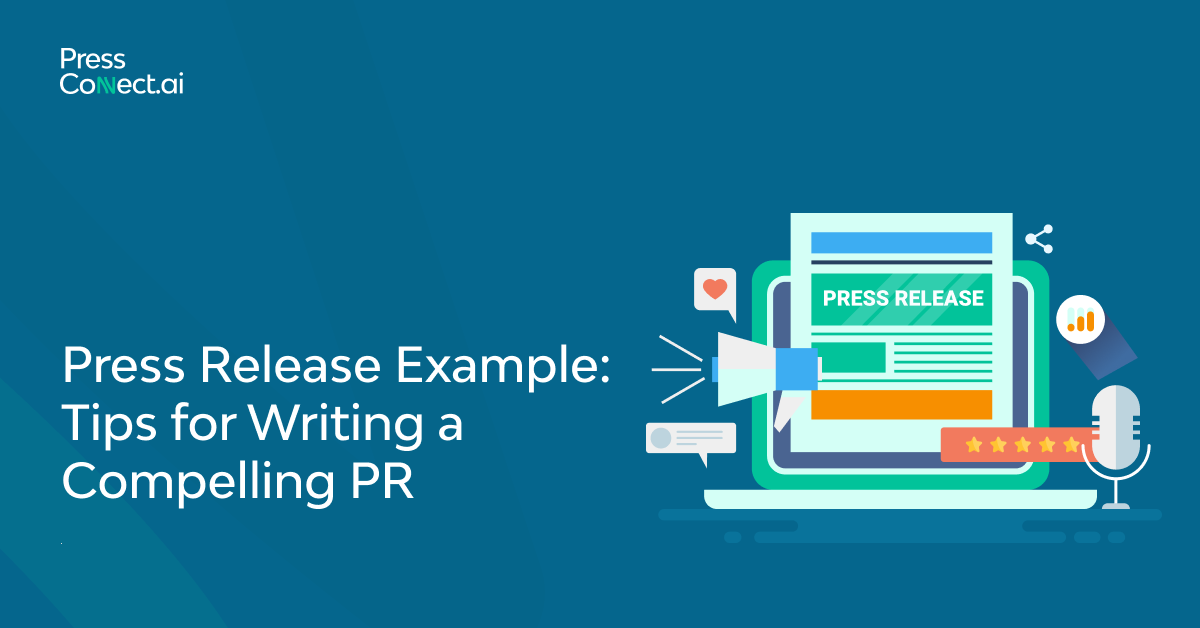How to Pitch PR Stories That Journalists Read
What is the secret behind stories being selected and shared in the high-level media, and the others going down the black hole of a journalist’s inbox?
It does not necessarily mean the breaking news. It usually depends on how you present it and how well you know the people you are selling to. Each day, journalists get hundreds of emails. The majority is deleted before being opened. The actual problem? The work of catching the eye, catching the eye, caught the eye.
This blog will guide you through all the steps necessary to create a successful pitch, including how to craft engaging press releases, utilize journalist networks, and leverage PR platforms to reach the right audience with a matching story. Although the pitch might seem different to a startup founder, in-house marketer, or PR expert, these tips will ensure that your next pitch hits where it belongs: in the headlines.
Understand What Journalists Want
Next time you are tempted to send that next pitch, consider the following question: Is this story going to act in the service of a journalist or me? Such a slight change of views can mean the difference between receiving coverage and total disregard.
Editors are not interested in promotional copy per se, but in copy that will fit in with their beat, involve their readers, and contribute to the editorial agenda of the publication. They do not want a press release in the form of a news release. They also do not want a sales pitch that lacks relevance to either the pitch or the audience.
In order to stand a better chance, research. Check out what the journalist has published in the past few weeks. See what types of angles they are likely to address, such as product innovation or founder stories, trends, or data-driven insights. This can be simplified by using journalist networks or a reputable media journalist platform that displays who writes about what, when, and how they prefer to be pitched.
A Jaw-dropping 10 Second Pitch
You think you have more time than you have. A pitch must capture the attention of a journalist in just a matter of seconds before he or she can choose to read it or delete it. The secret? Be value-oriented and clear.
Begin with an attractive topic line that attracts interest or sensibility. It can be nothing like clickbait, but rather what will make the journalist think it’s worth opening, or put another way, make them open it! Mentioning their name on it or citing an article they have recently published can also help.
In the body, conclude on the point. Your first two lines should respond:
- So why is this story read now?
- Why does this journalist need to care?
Avoid jargon, padding, and lengthy introductions. Do not pitch the main idea; rather, explain it to a friend. A single easily understandable angle, backed by context or data, is stronger than an extremely long list of separate facts gathered in bullet points. A punchy pitch is a sign that you are not wasting the journalist’s time, and can help them to say yes.
Make Your Press Release Worth Reading
A press release remains a robust PR weapon, although only when it is written with an objective. Reporters do not care for overly polished corporate lingo. They desire explanation, organization, and content.
Begin with a descriptive headline, which contains a summarization of the news in a one-line output. To begin with, the subject matter manager should be able to respond to the questions ‘so what,’ ‘who,’ ‘where,’ ‘when,’ and ‘why’ in simple terms. Do not use jargon, and use the key reason why the story is timely or relevant as the opening point – Is it a product launch? Round of financing? An insight into data-based industry trends?
Add some human touch and give reliable quotations from your CEO or other professionals. The whole release should not exceed one page, and the high-quality images, logos, or a press kit should always be attached or linked.
Above all, keep this in mind: you are not writing to your sales team, you are writing to the journalist. When your press release begins to sound less like a news item and more like an advertisement, then you need to do another draft.
When Is The Time?
Even the best story may flop when it does not come at the right time.
Journalists have a short working deadline and calendar. Release the news late, and you will miss the news cycle. Pitch before it is ready, and it is buried. The knowledge of the correct time to send your story may sometimes be what counts instead of what you are sending.
Normally, it is not advisable to pitch late on Fridays and public holidays. Mornings (mainly between Tuesday and Thursday) are also good times as journalists are sweeping the papers in search of leads. Whether your story is aligned with a trade show, a deadline in regulations, or a seasonal trend, you want to point it out front so that you can work in a sense of urgency.
Utilize online and PR tools or platforms to manage timing, embargoes, and outreach windows. Others also provide information on journalist activity so that you can pitch at the best moments. Time does not make luck in PR, but it is planning that does.
Not Annoying Follow-Up
The pitch that you sent was the best, but you have had no response. Is it necessary to call back? Absolutely. However, what you do next will make the difference between being remembered on the radar of a journalist or ending up on their blocklist.
Leave a gap of at least 2-3 days of business before making a follow-up. Make your message brief, courteous, and formal. Something like:
“Just checking in to see if this story is a fit for you—happy to provide more details or quotes if helpful.”
Do not send people a guilt trip, lengthy explanations, or overload their inbox. When you make a second round of follow-ups and do not receive a reply, then read the sign and move on. Reporters are busy, and silence does not necessarily indicate a negative answer; it may simply imply that the answer is not available at the moment.
Unless you have to pay for it, be grateful for coverage when you get it. Even when you are not, keep in touch by sending along corresponding ideas or news leads without pitching. This trust gets built over a period, and the following time when you make a pitch, your name may be one they have heard before.
Pitch Smarter Not Harder -the Press Connect Way
Pitching in the hyper-saturated world of the media means that it’s not enough to send emails; a story needs to be sent to the right journalist at the right time.
You have mastered ways to perfect your pitch, personalize your attack, and create press releases that are not deleted. However, a well-formed story may not be seen by anyone if it reaches the wrong inbox. Press Connect comes in there.
Press Connect is a specialist PR platform designed to connect brands and PR teams with verified journalists in one centralized place, focusing on fintech, regtech, and more. An end to which reporter needs what and where information should be delivered–and the ability to access real-time contact to journalist networks, editorial criteria, and forwarding mechanisms that get your story off the ground.
Now is the time to stop blasting and start forming meaningful relationships if you are passionate about sharing your story.
Begin with Press Connect – the right media and great stories.






